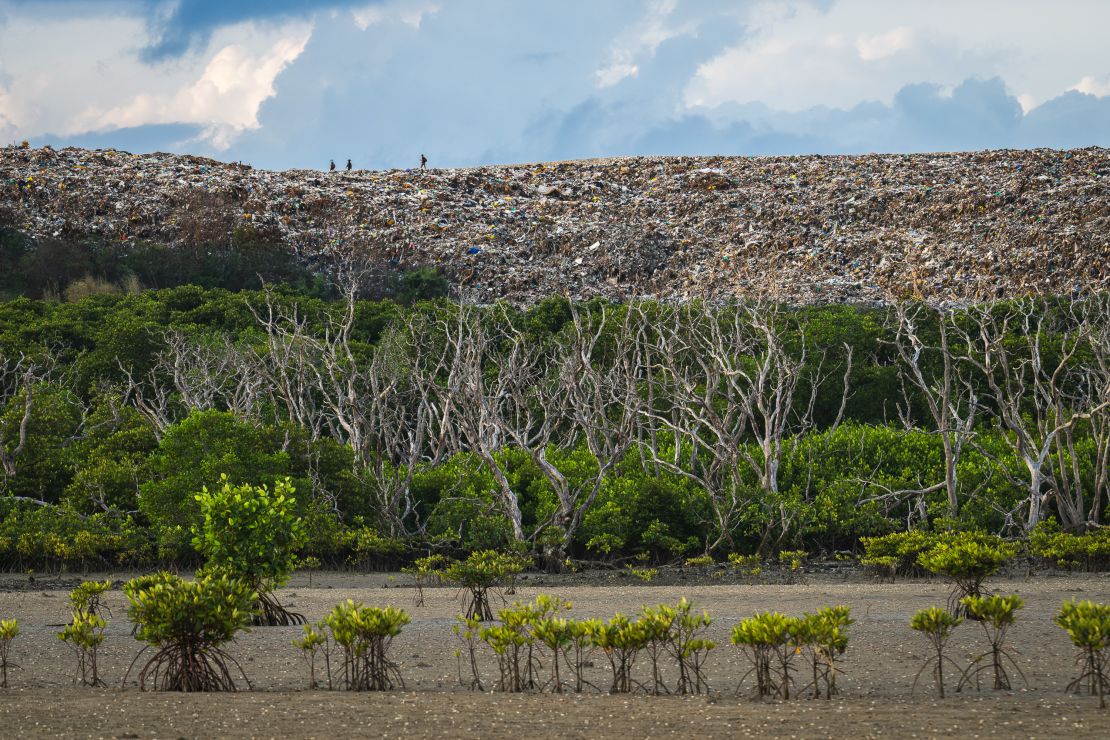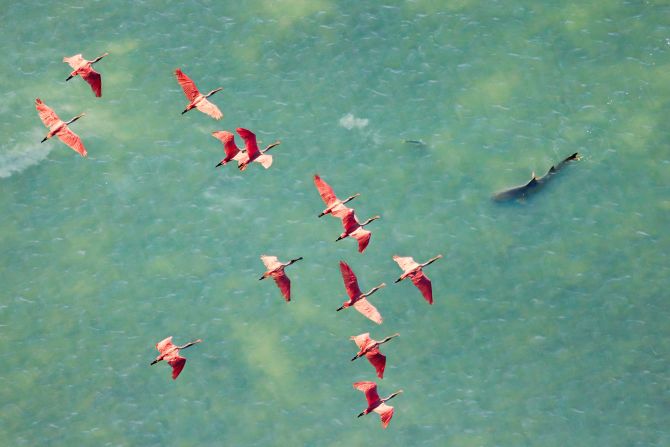Editor’s Note: Call to Earth is a CNN editorial series committed to reporting on the environmental challenges facing our planet, together with the solutions. Rolex’s Perpetual Planet Initiative has partnered with CNN to drive awareness and education around key sustainability issues and to inspire positive action.
CNN
—
A flock of roseate spoonbills flies overhead as a shark hunts mullet below. The water of Florida’s Everglades wetlands is turquoise and calm. But the serene image tells a bigger story, of the bright pink spoonbills that are becoming increasingly rare due in part to sea level rise and the loss of mangrove habitat where they forage for fish.
The striking photograph, taken by Mark Ian Cook, won the grand prize in the 2025 Mangrove Photography Awards.
“It clearly shows the diversity of life that lives and dies, both aerial and aquatic, in the same space and time, that all depends on the mangrove ecosystem,” said judge, photojournalist and marine biologist Sirachai “Shin” Arunrugstichai, in a press release.
The awards, in its 11th year, aims to raise awareness of mangrove forests — salt-tolerant trees living where freshwater meets saltwater — which are found in more than 120 countries worldwide. This year, it received a record 3,303 entries from 78 nations.
“The goal of the Mangrove Photography Awards is to captivate and inspire audiences across the globe,” Leo Thom, creative director and founder of the awards, told CNN. “We want to expose the beauty and complexity of mangrove ecosystems and, most importantly, to spark emotional connections that lead to conservation action on the ground.”
Mangroves are key in fighting climate change, as they are carbon sinks, serve as a natural barrier against flooding, and provide a habitat to endangered animals like tigers and jaguars.
But they are one of the world’s most threatened ecosystems. According to the IUCN Red List of Ecosystems, more than half of global mangroves are at risk of collapse by 2050.

“Despite their importance, mangroves are often still overlooked,” said Thom. “Unlike iconic ecosystems such as the Amazon rainforest, mangroves are frequently misjudged and seen as mosquito-infested swamps or wastelands.
“This is where photography becomes a powerful tool for change. It offers a window into the real stories of mangroves,” he added.
One of the categories in the awards is dedicated to mangrove threats. The winning image, taken by Tom Quinney, shows a mountain of waste towering over a dwindling mangrove forest in southern Bali, Indonesia. Runners up in the same category depict horseshoe crabs tangled in fishing nets, mangrove forests that have been converted for prawn aquaculture, and drought.
Other commended images show how people depend on mangrove forests for their livelihoods. A series of photos depict women collecting honeycomb in the Sundarbans, the world’s largest mangrove forest, which is primarily in Bangladesh. Rising sea levels, salinity and more extreme cyclones are damaging the forest and displacing communities.
The images “reveal the intricate relationships and vibrant biodiversity … and show the profound human connections within coastal communities that depend on mangroves for their way of life,” said Thom.
“(It’s) more than a contest,” he added. “It’s a call to observe, feel and learn. It’s a platform for photographers to speak up for one of the world’s most vital, yet misunderstood ecosystems.”




